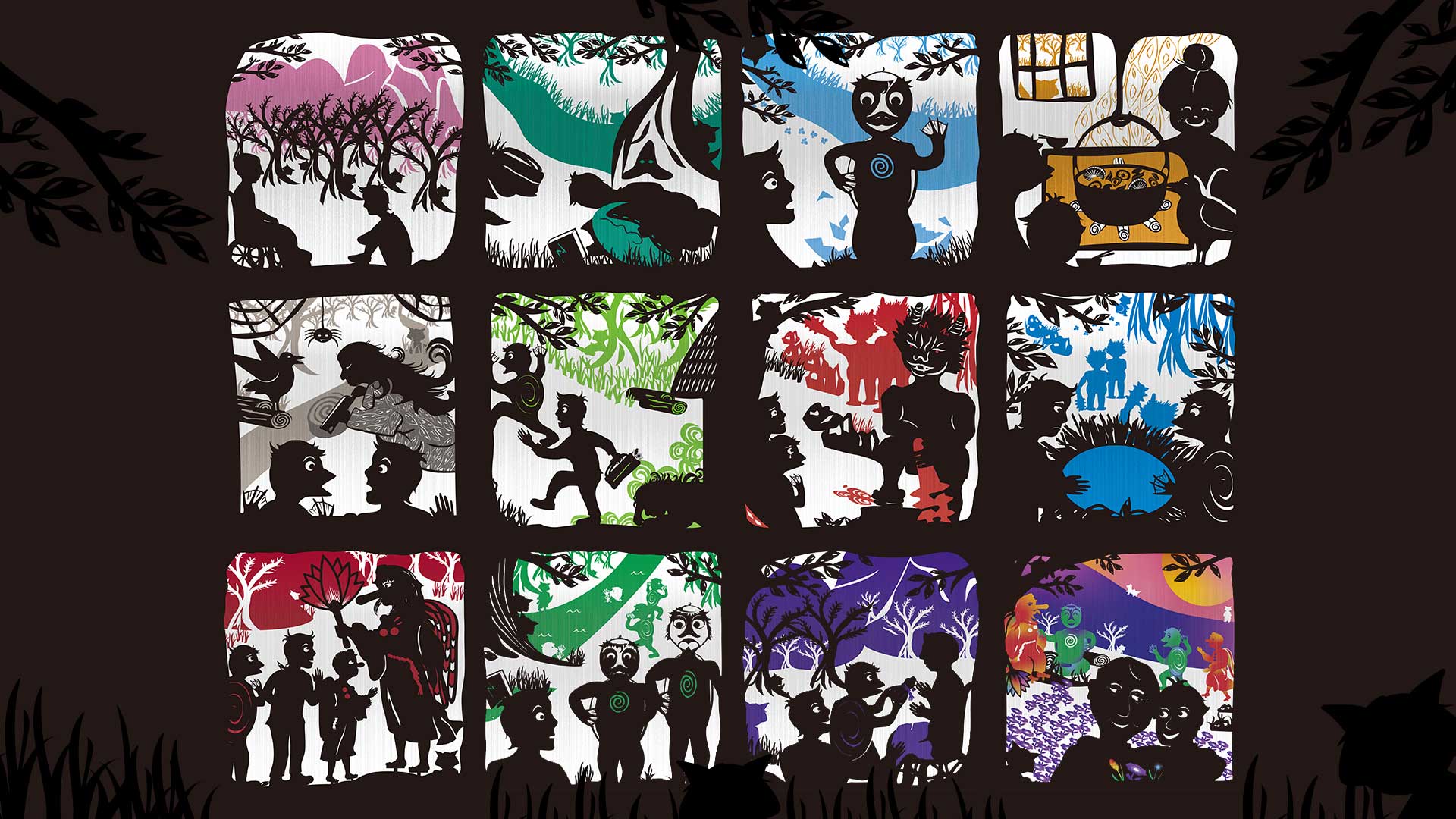I recently finished a series of illustrations for the fantasy adventure story “Keita and the Forbidden Forest”. Written by Thersa Matsuura, the 12 chapter story was printed in the Asahi Weekly Newspaper from June 30 to September 27, 2020. It has been a while since I did any consecutive illustration work, so I was stoked to work with her for this Japanese folklore inspired story.
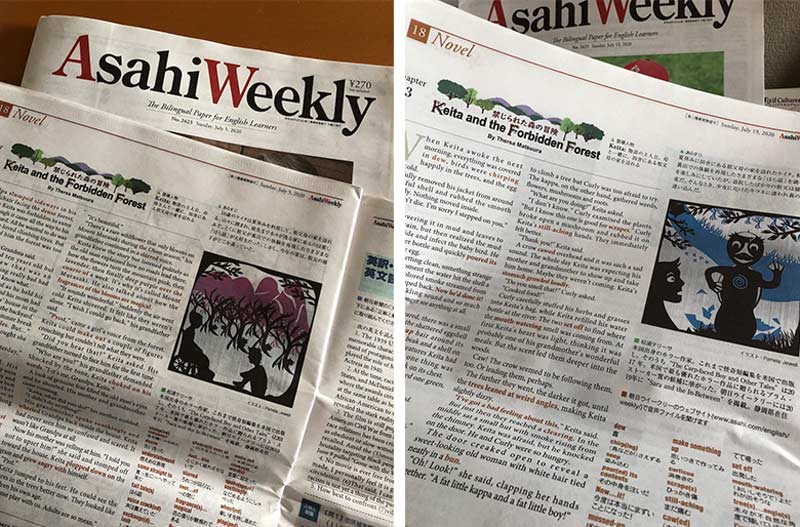
About the story “Keita & the Forbidden Forest”
The main character is Keita, an 11-year-old boy lost in an otherworldly forest teeming with yokai creatures ranging from playfully bizarre to bone-crushingly dangerous. He must not only escape, but also find a way to grant his dying grandfather’s last wish.
Author: Thersa Matsuura’s Uncanny Japan
Thersa (aka Terrie – you should ask her tell the story about her name) and I go way back. One of my oldest friends, our first meeting was at a summer intensive Japanese language class at the University of Nebraska at Omaha. Both of us were International Studies majors with dreams to study in and discover the real Japan. She has been my “senpai” ever since. Terrie made it to Shizuoka University first, stayed in Shizuoka, married, had a son and made a life here working as a creative writer.
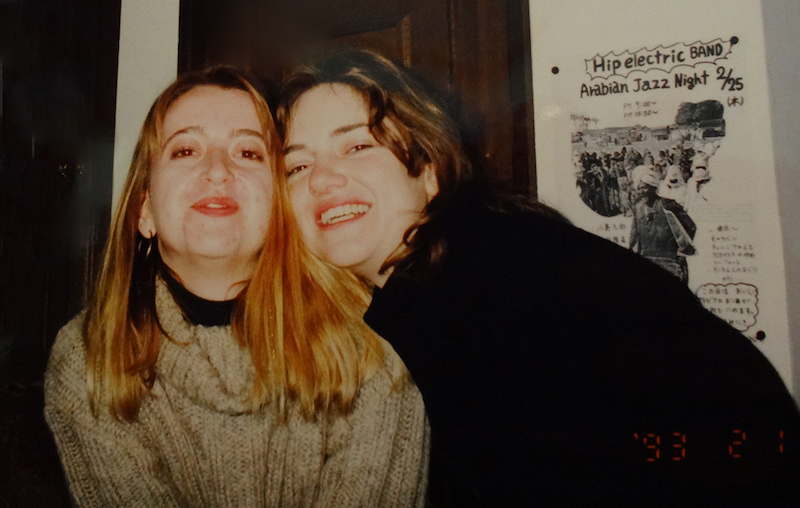
Enamored with the mythical, mysterious and macabre in Japan, Terrie researches Japanese folklore, legends and superstitions and creates original tales she calls “Mythical Realism”. She has 2 books of short stories already published: “A Robe of Feathers: And Other Stories” & “The Carp-faced Boy and Other Tales“, and was a Bram Stoker Award finalist for the latter. Carp-faced Boy will give you shivers. And one of my favorites is the beautiful story, “Sand Walls, Paper Doors” from A Robe of Feathers. It is about a lonely exchange student in Japan who finds unusual friends in an unlikely place. A story anyone who has ventured outside their hometown to study or work can relate to.
Finding the Perfect Uncanny Illustration Style
Terrie’s writing is very vivid and the magical world of “Keita and the Forbidden Forest” conjured up images in my mind immediately. The story is set in recent times but possesses a timeless charm. I decided the illustrations for this story needed to match that fable-like quality that veers just a bit from tradition.
After some research I came across artists such as Andrea Denzö, Hari & Deepti, Kyoku Imazu, and Sebatien G. Orsini. Their kiri-e (paper-cutting art) and tunnel book artworks capture an ethereal feel. Paper-cutting is an old and popular art form in many cultures. “Tunnel Books”, also known as “Peep Shows”, started in the mid 1800s. Creating a tunnel book involves a series of cut paper panels which are layered to create an illusion of depth. The books are read through a hole in the front cover and many expand out like an accordion. There are a number of modern-day artists like Andrea Denzö who still employ this method.
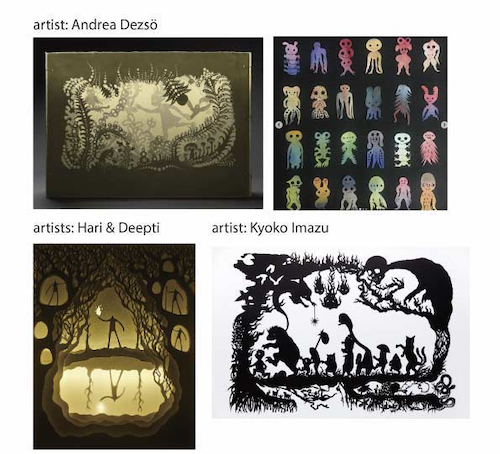
Illustrating Keita & the Forbidden Forest
But there was no time to do 12 handmade tunnel books or kiri-e. These illustrations were going to be printed small on newsprint, and I had newspaper deadlines. So I kept them simple, digitally constructing them to have the feel of layers.
I made sure to include an easter-egg in each illustration – at least one all-watching fox-girl character. Also, keeping with a kiri-e style, I limited colors to black for the front panel + the main color Terrie included in each chapter. From reading notes, concept, rough drafts to finished illustration, the process took an average of 5-6 hours per chapter.
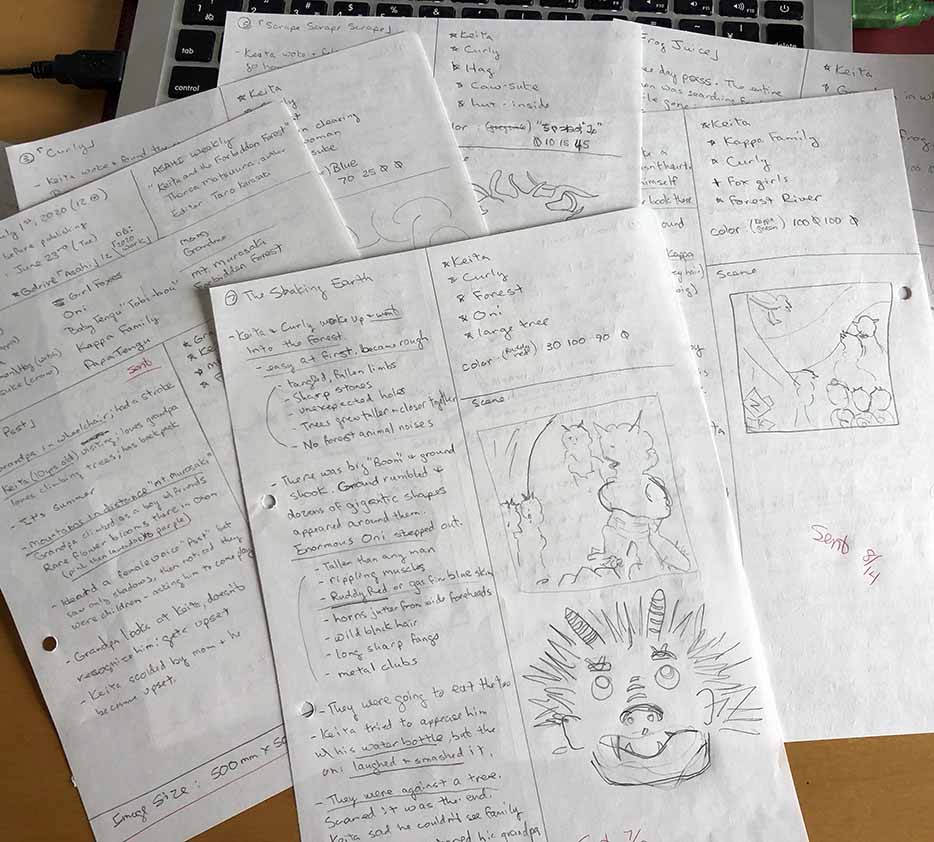
The one character I particularly struggled with and ended up loving was the Oni. I didn’t want it to look like the stereotypical Japanese oni illustration but still be recognizable as an oni. Inspiration came from an Instagram picture of a … cat.
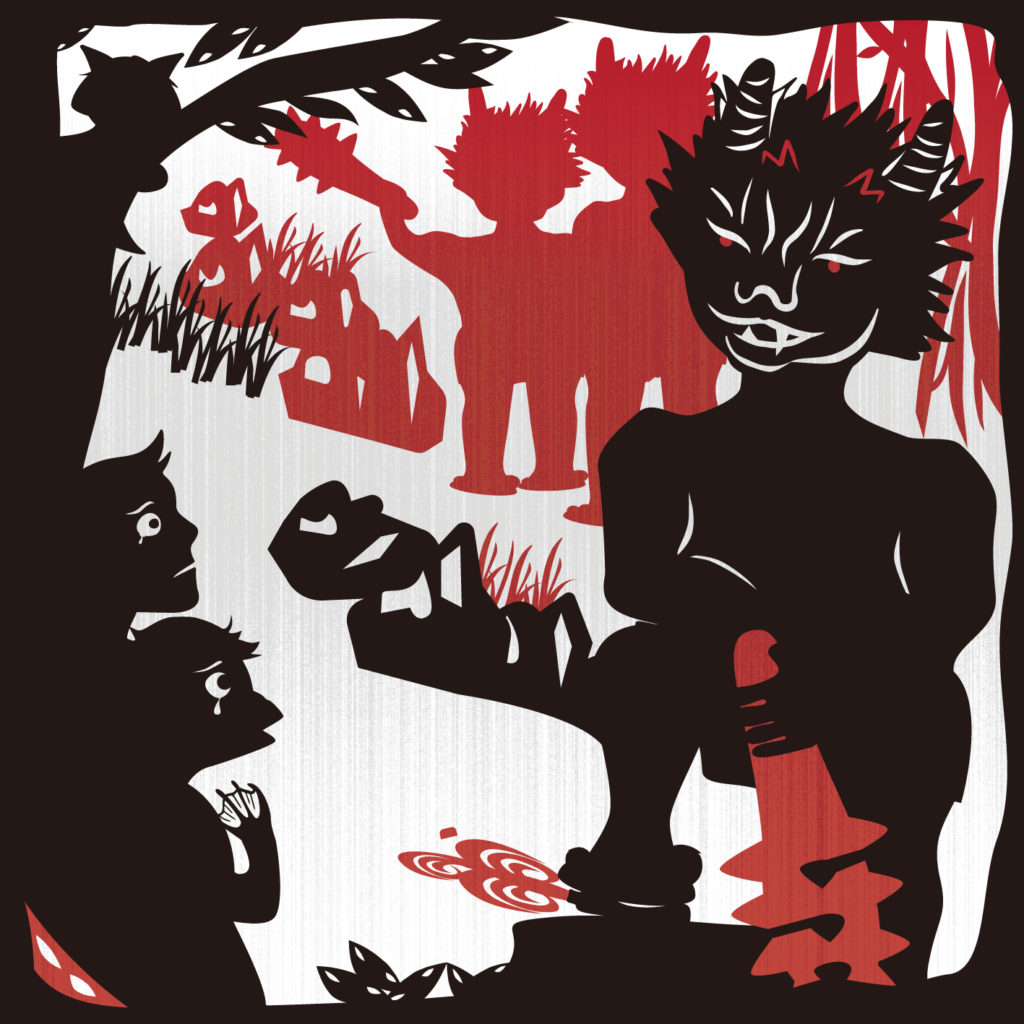
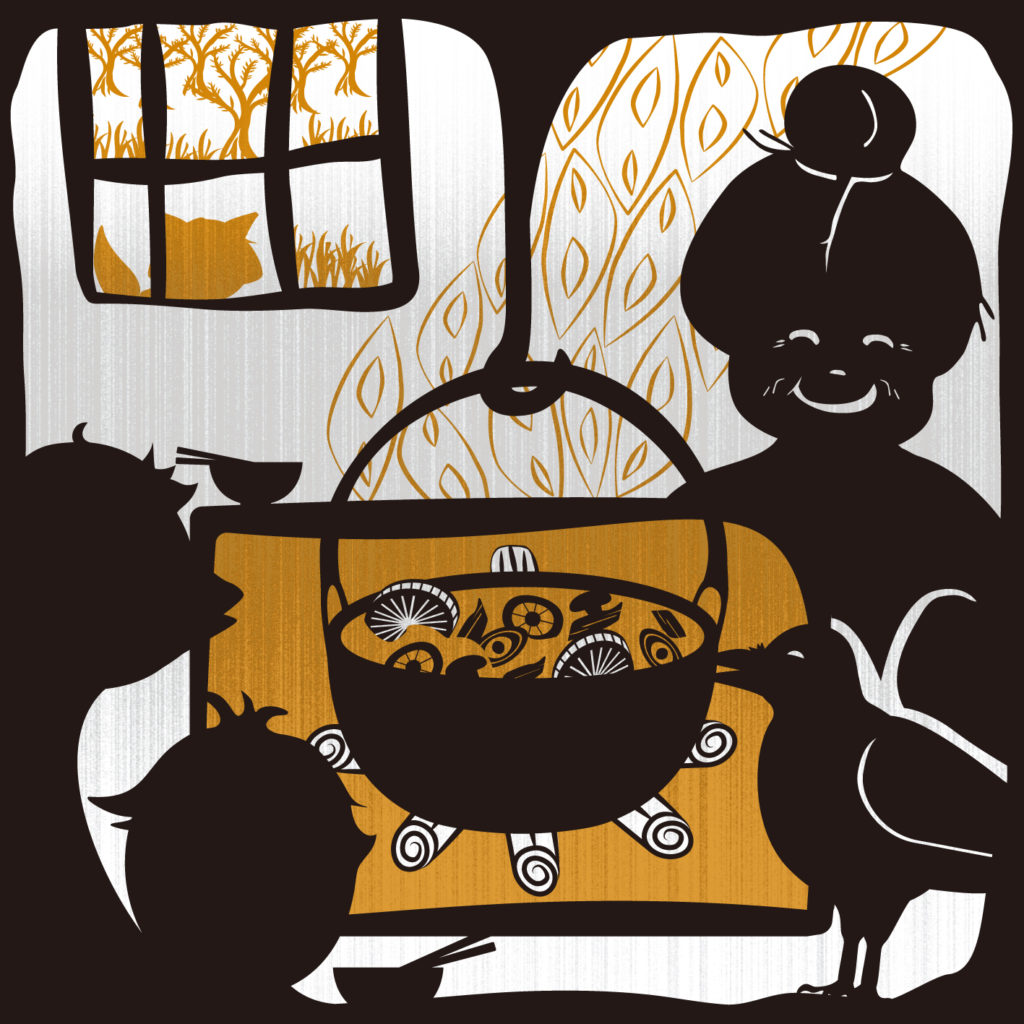
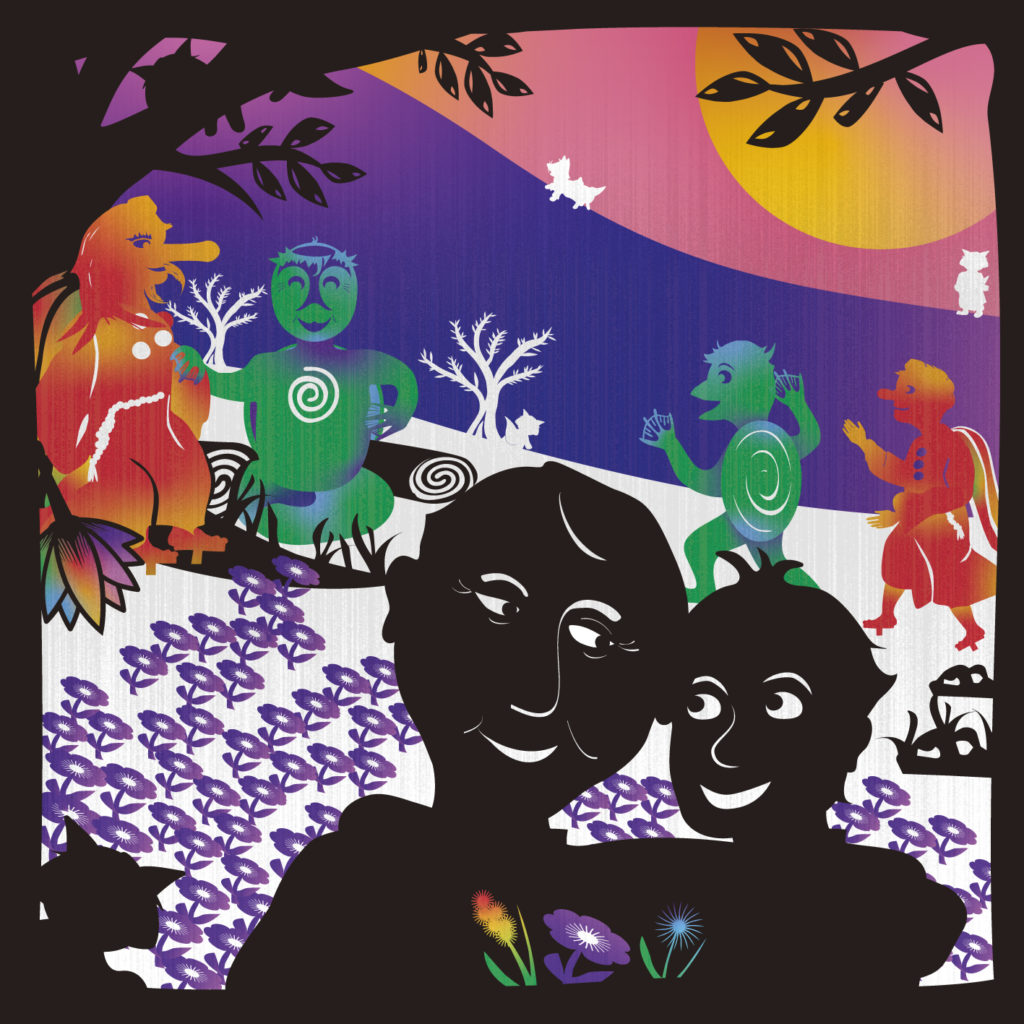
The Asahi Weekly editor in charge of this series called the illustrations, “…all beautiful (especially Chapter 12 – it reminded me of the scene in “Wizard of Oz” where the world suddenly switches from monochrome to Panacolor) Magical.”
Future Plans for Keita’s Story and Kiri-e Illustration Style
I asked Terrie about future plans for Keita & the Forbidden Forest.
“When I wrote “Keita and the Forbidden Forest” for the Asahi Weekly I didn’t want to stop. The story and characters are very fleshed out in my head, but I had to keep it lean to stay within the word count. Now that it’s finished running in the newspaper the rights have reverted to me. I’m rewriting it, adding all the rich detail and story I had to leave out, as a mid-grade book. I hope to have a first draft finished by the end of the year. Then depending on what my agent says, we’ll see how it will get published. “
Yay, more adventures to come!!!! As for the illustrations…
“I’d absolutely love to have Pam do the cover and chapter art for the extended version, too. She really captured the heart of Keita and his little yokai friends, scary enemies, and the magical forest where the adventures take place.
Pam and I have been talking for years about doing a project together. So many times we’ve sat down and brainstormed ideas, all of them wonderful if I remember correctly. I’m so happy that we were able to do this together and I’m very excited about future projects.”
I too would love to work more with Terrie and expand visuals of the story – maybe even try an analog version. This project was so much fun. We waited way to long and thanks to Terrie for writing this story we actually got a collaboration project started.
This digital paper-cut style would make an interesting book cover, packaging… one friend even suggested furoshiki!
Find more of Keita and the Uncanny in Japan
You can find all the individual images on my Instagram. Check them out and let me know which image or character is your favorite.
Terrie also has an English-language podcast called “Uncanny Japan“. The Uncanny Japan Podcast explores all that is weird from Japan—strange superstitions, folktales, cultural oddities, and interesting language quirks. Definitely check it out if you have any interest in Japan or just want to be soothed to sleep by an alternative bedtime story.

